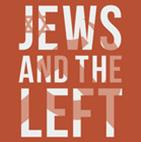Jews and the Left: the Rise and Fall of a Political Alliance by Philip Mendes. Palgrave Macmillan, 2014.
American Jewish Culture and the Liberal Persuasion by Henry L. Feingold. Syracuse University Press, 2014.
In his “Jews and the Left: The Rise and Fall of a Political Alliance” Philip Mendes, a professor at Monash University, has produced , in the main, a fine systematic work of history and analysis that avoids oversimplification, recognizes exceptions to general trends, and is international in coverage. Two of the reasons Mr. Mendes cites for Jewish over-representation in left-wing parties and causes (though he is careful to point out leftists have always been a minority of Jews) is the Left’s support for Jewish emancipation and equality in Europe and oppression of Jews by rightist governments and movements. Mr. Mendes includes a discussion about the wide variation in the extent to which left-wing Jews have self-identified as Jews. Regarding the causes of the post-Second World War decline of the alliance of “a significant minority of Jews” with the left, Mr. Mendes includes, in part, Soviet anti-semitism, left-wing anti-Zionism, the decimation of the Eastern European Jewish socialist Bund during the Holocaust, the move of much of the people from poverty to the middle class, and the founding of the State of Israel and the victory in the Six day War which led Jews in the diaspora to behave more similarly to other national emigre groups.
As the title indicates “American Jewish Culture and the Liberal Persuasion” differs from the Mendes tome not only in geographical scope but in ideological range. While recognizing the influence and legacy of socialist political opinions of some East European Jewish immigrants of the late nineteenth and early twentieth centuries, Mr. Feingold (an emeritus City University of New York professor) avers that, “from the outset the social democratic element in Jewish political culture was more focused on implementing social justice programs then [sic] on sophisticated economic theories concerning class struggle and surplus value. “
Mr. Feingold analyzes America Jewish political culture as a triad. The central, most important, element in his scheme is “liberalism,” i.e. a center -left sensibility. Zionism and Holocaust consciousness inflect its liberalism. Zionism, as a form of nationalism, is in some tension with the universalism of liberalism. Still, Israel’s liberal democratic regime has made it mostly acceptable to Jewish liberals, quite aside from the all but universal American Jewish move to Zionism as a result of the Holocaust. Mr. Feingold writes, “Even paranoids have real enemies, and Jews have, after all, lived a classic paranoiac nightmare; they experienced a world that wanted to murder them and gave them no haven.” As for Holocaust consciousness, Mr. Feingold thinks this has not shaken the fundamental optimism of the liberalism of the Jews but it has made them sensitive to the possibility of genocide and encouraged activism against it.
Mr Feingold’s study is much more impressionistic and less fact-based than that of Mr. Mendes. While there is a lot to be said for his triad, his book is repetitive and overlong. At some points the style seems almost stream of consciousness. In the end, Mr. Feingold admits to not knowing why American Jews are so committed to liberalism which means, practically, the Democratic Party. Mr. Mendes notes there is some evidence that a majority of Jews vote for conservative parties in England, Canada, Australia. France, and Italy and offers some explanations of why American Jews differ. First , “the Democrats are a liberal rather than social democratic party, and they do not present any ideological critique of free market capitalism.” This does not seem compelling since the same may be said of many of the main left of center parties in the west. They have largely made their peace with market capitalism just as conservative parties have, by and large, made their peace with the welfare state. He seems more on target when he notes the Democratic Party does not include anti-Zionist factions, something that cannot be said of some center-left parties elsewhere. Both he and Mr. Feingold point out the social liberalism of most non-orthodox American Jews. This last point certainly strengthens the bond of American Jews to the Democratic Party but neither author attempts to explain this proclivity on the part of so many non-orthodox American Jews to favor legalization of abortion on demand and homosexual marriage. Until and unless this fact is explained, though, the strong tendency of American Jews for the Democratic Party will continue to remain something of a mystery.


